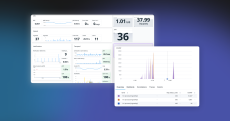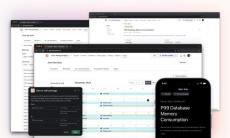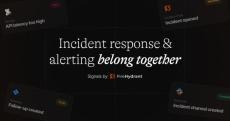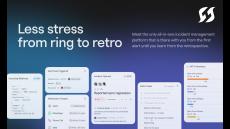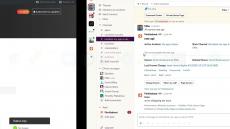|
By Robert Ross
Over the last five years we’ve seen our customers run 583,954 incidents more efficiently thanks to a shared workspace, powerful Runbook automations, and auto-captured data. Yet despite a great deal of progress, incident efficiency hasn’t achieved peak potential. We talk to a lot of folks that are still stuck in the muck: new responders struggle to get up to speed quickly, incident commanders wade through post-incident drudgery, and knowledge silos prevent comprehensive improvements.
|
By Danielle Leong
FireHydrant is mission-critical infrastructure for thousands of engineers. It’s our job to be up – even when everything else is down. Here's a technical look at how we tested Signals alerting and on-call to ensure high availability and speed.
|
By Robert Ross
Is your DevOps tool stack out of control? I feel like every day, I talk to someone who feels this pain. The technological golden age of the past few years created a lot of niche tools, but now that CFOs and boards alike are demanding budget restraint, many of these tools are being scrutinized. The reality of the situation is that it’s not good enough for a tool to do one thing anymore.
|
By Robert Ross
TL;DR You deserve a better alerting and on-call tool. So we built Signals. In our early days, we often used the tagline, “You just got paged. Now what?” It encapsulated how FireHydrant solved for all of the messy bits that come after your alert is fired, from incident declaration all the way through to retrospective. At the time, we saw alerting and on-call scheduling as a solved problem.
|
By Milan Thakker
Analytics are great. We can all agree there. But not all analytics are created equal. FireHydrant has long offered incident analytics dashboards that provide an in-depth look at the entire incident lifecycle. You can see how incidents impact services and teams, understand retrospective participation and completion, and even get insight into follow-ups. But great analytics do more than simply organize data. They help you tell a story.
|
By The FireHydrant Team
In this article, we will explore how Dock is working to significantly enhance its response time to critical incidents, emphasizing effective integration between tools as key to success. We will address how we challenge the conventional approach by shifting the focus from Mean Time to Acknowledge (MTTA) to Mean Time to Combat (MTTC), a customized metric that measures the time between incident detection and effective communication involving professionals capable of resolving it.
|
By Robert Ross
Once the unsung heroes of the digital realm, engineers are now caught in a cycle of perpetual interruptions thanks to alerting systems that haven't kept pace with evolving needs. A constant stream of notifications has turned on-call duty into a source of frustration, stress, and poor work-life balance. In 2021, 83% percent of software engineers surveyed reported feelings of burnout from high workloads, inefficient processes, and unclear goals and targets.
|
By Robert Ross
Although FireHydrant has spent five years focused on what happens after your team (erg, I mean service 🙄) gets paged, the topic of alerting often comes up in discussions with our community. People are tired of paying big bucks for software that’s expensive, bloated, and hasn’t seen much innovation. Clearly, there’s a problem here – and we’re tackling it head on.
|
By Robert Ross
On-call scheduling is tricky. Like, really tricky. It was one of the scariest parts when we decided to build a modern alerting system earlier this year. We knew we couldn't cut any corners on Day One of our release because it needed to be a fully loaded feature for someone to realistically use our product (and replace an incumbent). This meant including windowed restrictions, coverage requests, and simple to complex rotations.
|
By Jouhné Scott
Your status page (or lack thereof) has the opportunity to signal a lot about your brand — how transparent you are, how quickly you respond to incidents, how you communicate with your customers — and ultimately, this all seriously impacts your reliability. After all, as our CEO Robert put it in a recent interview on the SRE Path podcast, you don’t get to decide your reliability; your customers do.
|
By FireHydrant
Meet the only all-in-one incident management platform that is there with you from the first alert until you learn from the retrospective.
|
By FireHydrant
Engineers are bombarded with pages left and right. There's uncertainty about how to escalate. A constant blur exists between what's urgent and what can wait. This never-ending ping-pong game takes a toll. Burnout creeps in, and your engineering culture has taken a nose dive before you know it.
|
By FireHydrant
In this episode we chat with veteran cloud architect Masaru Hoshi about the challenges of alert fatigue, the importance of effective alerting systems, and fostering ownership in software teams. Masaru shares insights from his 30-year career, emphasizing the need for balance, trust, and collaboration in incident response.
|
By FireHydrant
In this demo we'll look at how FireHydrant can solve the pains of quickly declaring and managing an incident, all from Slack.
|
By FireHydrant
See how FireHydrant can help you achieve better reliability, get to resolution, and back to bed quicker.
|
By FireHydrant
FireHydrant is the only comprehensive reliability platform that allows teams to achieve reliability at scale by creating speed and consistency across the entire incident response lifecycle.
- March 2024 (3)
- February 2024 (4)
- January 2024 (1)
- December 2023 (3)
- November 2023 (3)
- October 2023 (6)
- September 2023 (3)
- August 2023 (4)
- July 2023 (4)
- June 2023 (5)
- May 2023 (6)
- April 2023 (4)
- March 2023 (6)
- February 2023 (2)
- January 2023 (3)
- December 2022 (3)
- November 2022 (3)
- October 2022 (3)
- September 2022 (1)
- August 2022 (4)
- July 2022 (2)
- June 2022 (5)
- May 2022 (4)
- April 2022 (5)
- March 2022 (4)
- February 2022 (4)
- January 2022 (2)
- December 2021 (1)
- November 2021 (1)
- October 2021 (3)
- September 2021 (6)
- August 2021 (3)
- July 2021 (1)
- June 2021 (1)
- May 2021 (7)
- April 2021 (3)
- March 2021 (4)
- February 2021 (4)
- January 2021 (4)
- December 2020 (2)
- November 2020 (2)
- October 2020 (7)
- September 2020 (5)
- August 2020 (2)
- July 2020 (6)
- June 2020 (6)
- May 2020 (1)
- April 2020 (4)
- March 2020 (2)
- January 2020 (3)
- November 2019 (1)
- October 2019 (2)
- September 2019 (2)
- August 2019 (2)
- July 2019 (1)
- June 2019 (3)
- May 2019 (7)
- April 2019 (2)
Utilize SRE best practices using FireHydrant’s incident response platform to organize, investigate, and remedy faster.
FireHydrant helps teams respond to service disruptions easily and effectively. By allowing teams to “rally the troops” with only a few clicks and assign incident roles to responders, responsibilities are quickly defined and allow people to focus on what matters: restoring service.
Organize, Investigate, Remedy and Prevent faster with FireHydrant:
- Teams: Fill out your SRE roles and assign members to instantly delegate responsibility in an incident. Assign who owns what components to get the right people on the job.
- Slack Integration: If you're using Slack, FireHydrant gets even better. Quickly open incidents, notify other channels, and assemble your team easily all without leaving Slack.
- The Service Catalog: Keep a catalog of your environments and the things running in them with our service catalog feature. Make it easy to quickly find all of the gears of your product.
- The Changelog: Fire's typically start when something changes. That's why we offer a one stop shop for you to log all of the change occuring in your stack.
- Incident Logs: While you're fighting a fire, FireHydrant will transparently keep track of changes and Slack chat in your incident log automatically. You can easily filter notes and chat as well.
- Post mortem: Easily access all prior incidents with fine grain filtering to help make actionable changes to keep your system robust.



